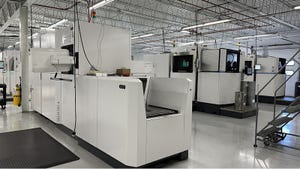November 3, 1997

Newton, MA--A fellow engineer once remarked to me that he would never buy a car from another engineer. He figured they tinker away at it, trying to keep it running as long as they can, beating it into the ground so there's not much left to sell. This is typical of what many engineers like and are adept at--maintaining performance, whether a car or the family appliances. But does the old-car syndrome now apply to the breakdowns and incidents on the Russian space station and their impact on the Shuttle/Mir program? And if so, is there any technical benefit to that?
To the extent that the Russians keep fixing everything, probably yes--and it's intentional. Former-astronaut Frank Culbertson, who directs the NASA Shuttle/Mir program, says they operate non-mission-critical hardware until it fails, "as we will do on the International Space Station (ISS)" . They have an extensive data base of what is likely to fail and what spares should be maintained on-orbit--experience critical for the ISS--with lessons being factored into US plans.

The modular Mir station core was launched in 1986. Attached science modules were added over the years, with the last, Priroda, installed in 1996. Ambitious original Soviet plans by now would have produced a newer Mir-2 core that these would have been transferred to, and an Earth-based module refurbishment program using the since-canceled Buran shuttle. Upon initial occupancy of the International Space Station (ISS), Mir will be deorbited in early 1999. |
The American people, press, and Congress are also wondering about recent Mir major mishaps including:
A February 1997 uncontrolled fire in a backup oxygen-producing lithium perchlorate cassette, or "candle" as the Russians term them.
A collision during a June manual-docking practice with a Progress supply ship that punctured the Spektr science module. This cut station power and cost the use of science equipment in the depressurized module.
Repeated main computer shutdowns due to component failures and human errors that allowed the station to drift from pointing its solar arrays to the sun. Continuous leaks of ethylene glycol coolant from the thermal control system that prevented drinking of condensate and caused mucus membrane irritation.
A 500- to 1,000-m near miss with a US satellite in September that saw the crew enter the Soyuz return ship as a precaution.
Culbertson adds that it was recently determined that the lack of a rubber seal in the generating unit caused the fire. Ignition procedures have been tightened, along with communications between Russian and US technical and management teams. NASA is now involved in risk assessment on Mir both before and after each Shuttle mission to meet astronaut mission-continuation requirements drawn up within the last year. Agreed on by both countries, these allow continued US participation, with specific guidelines including safety and early-crew-return criteria. Under this document, in August this year, Culbertson pointedly asked his Russian counterparts to address specific safety concerns before the subsequent US mission the following month.
The Progress collision happened during an exercise that followed the guidelines originally in place at the beginning of the joint program-- which did not give NASA test specifics. It also took place outside of ground communications, a US requirement and in the new guidelines, and also addressed in Culbertson's letter. As this is written, the collision cause is yet to be determined, but subsequent maneuvers ruled out cargo-ship weight and center-of-gravity errors. The US will increase monitoring of Russian telemetry. In the future, US experiment-planning and trajectory-modeling personnel will also be assisting the Russian flight-control teams.
Culbertson says planning groups acted quickly to formulate a post-collision science plan for the mission scheduled to start in September. Backup hardware for some equipment lost in Spektr and some experiments that hadn't flown are being used. A total of 35 experiments are in the plan, "more than any other to date!" This will give a "science value" of 80% of the original mission.
One of the computer outages was caused by a cosmonaut disconnecting a cable because he read the wrong page in a procedures manual. The September flight also carried a new replacement computer to maintain constant solar-cell orientation toward the Sun.
Dissimilar metal corrosion "that required the right combination of time on orbit and increased condensation to manifest itself," caused the coolant leaks, he adds. Monitoring, repair, and cleanup methods were implemented. Design changes were developed for the Russian ISS modules to prevent similar problems. Finally, an old NASA hand notes lack of communication between military and civilian programs was likely the cause of the satellite-near-miss flap.
Safety first. These and other issues were addressed at a US House hearing in September by Culbertson. The presence of an ex-astronaut at the helm, as well as that of Apollo astronaut Tom Stafford chairing an independent body reviewing readiness of each US mission to Mir, is designed to ensure that crew safety is not compromised. Official reviews are conducted right down to two days prior to any launch. "Safety is our highest priority, and it will not be compromised," Culbertson emphasized.
Originally US astronauts were treated as guest cosmonauts, similar to other international science researchers not directly involved in station operation. In gearing up for Russian partnership on the ISS, "It became clear that our goal of learning how to work with the Russians should include direct involvement in operations themselves," Culbertson told the hearing. A new training program was agreed upon in the summer of 1996. Mike Foale, who flew to Mir in late spring this year, was the first US astronaut to fly under this program. He was considered part of the Mir crew, participating in maintenance and regarded as the on-board computer expert. "We are now in a partnership role with the Russians in the operation of a space station," according to Culbertson.
Several years ago, Culbertson notes, the ISS program reviewed Russian design specifications to better understand their engineering design process. It was concluded that "equivalence to" rather than "compliance with" US requirements was a reasonable approach. He adds, "The Russians already had an established history of safe, successful flight operations. Russian hardware design was mature." Similar to the US, this includes two-fault tolerance for crew safety and one-fault for station safety. More support personnel now staff each other's mission control and support facilities.
Lessons learned. The Mir mishaps are valuable experience to understanding what to do when things go wrong, cites the aforementioned NASA hand. "Certainly you are somewhat more at risk but there are lessons to be learned. When we get our station up and running, who knows what will go wrong?" he adds. This experience also includes the EVAs (space walks) for repairs as well as increased attention to rescue vehicles. And while technical issues such as component longevity can be designed for, human failures, like disconnecting a computer, won't go away as easily, he adds.
Finally, Culbertson notes other Mir experience useful in preparing for ISS operations. "The Russians train for systems skills rather than for flight-specific tasks. This is a natural approach for long duration missions" as opposed to shorter Shuttle flights. In planning long-term missions, predicting what will happen in the second or third month is virtually impossible and flexibility is a must. "A long-duration vehicle requires a different approach, more in common with a ship at sea than an aircraft in flight. We will have years of experience working together before we even begin operating the ISS," Culbertson says.
Rick DeMeis edited the books, Space Station Handbook, The Cosmonaut Training Handbook, detailing the Mir complex; and Cosmonautics, A Colorful History, backgrounding the Soviet/Russian space program.
Space odyssey, 1997
Rick DeMeis, Associate Editor
The Russians have Salyut space station experience dating back to 1971. The Mir design, orbited in 1986, is based on an evolved Salyut configuration, chiefly in having four module berthing ports surrounding a central docking port. The Soviets had grand plans in the mid-80s, according to long time Soviet/Russian space analyst Charles Vick of the Federation of American Scientists. They envisioned oblakos, or swarms, of orbiting laboratories and observatories serviced by cosmonauts shuttling among them. Their launcher pipeline would easily accommodate servicing any on-orbit equipment breakdowns. And the Buran shuttle, with its cavernous cargo bay, would transfer orbital space-station science modules to and from the Earth for refurbishment with new equipment and systems. Similarly, a new Mir 2 core was to be launched as part of the plan for orbital module basing.
The end of the Cold War and economic reality lead to shelving such schemes--leaving the Mir core to soldier on. The refit capability for the science modules berthed at the station was limited by what could be done internally by the crew. And electrical power was augmented by clusters of solar panels rigged to the hull. Vick notes the Russians now plan to separate the science modules from Mir beginning late next year, once initial habitation of the ISS is possible. These will be deorbited to burn up in the atmosphere, followed by the Mir core in early 1999. Russia simply cannot afford to support operations in two orbiting facilities.
Vick says there are still learning opportunities in the last year or so of Mir operations, not just for the ISS but potential manned planetary flights. "Learning now, rather than later, is a lot cheaper," he says. With failures of the aging hardware becoming more frequent, "The Russian philosophy of running until it fails, while keeping records, adds to a valuable data store. But how one failure affects other systems must be cautiously monitored to avoid overt danger to the crew. We are also learning valuable lessons in melding different design cultures and criteria dealing with operations, design, hardware retrofits, procedures, safety, and training."
Even the fire is of benefit for the ISS, Vick feels. Lessons here are critical to the station since, he points out, there are now similar "dead ends" in the ISS design. Occupants can be cut off from the rest of the station by a fire. Thus EVA rescues and spare hatch arrangements to avoid any need for total module decompression are important considerations. Originally, NASA's station designs had numerous modules connected in ladder-like or "racetrack" arrangements, where either end of a module led to another. Budget tightening simplified the design but left several dead-end modules among those now provided by the international partners.
Marcia Smith, space policy analyst for the Congressional Research Service, adds the Mir situation may not be as bleak as media portrayals. While there are more anomalies than before, as expected, the cosmonauts have extensive experience in repairs, because Mir is Russia's seventh space station. She says that after 22 years of studying the Russian station program, "Seeing them salvage situations that appeared unsalvageable time and time again, it is difficult not to be impressed."
And Charles Vick finally notes, "Remember President Kennedy said we go into space 'not because it is easy but because it is hard,' for greater payoff in knowledge and experience."
About the Author(s)
You May Also Like





